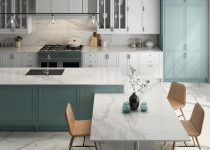Elevate Your Space with Stylish Wall Cladding Design

Wall cladding Design is a sophisticated and practical way to enhance the aesthetic and functionality of both interior and exterior spaces. By adding texture, color, and dimension, wall cladding transforms ordinary walls into striking features that can dramatically change the ambiance of any environment. In this article, we explore the benefits of wall cladding, popular design options, and tips for selecting the perfect cladding to elevate your space.
The Benefits of Wall Cladding
-
Aesthetic Appeal: Wall cladding adds a unique and attractive element to your space. With a wide range of materials and styles available, it can complement any design theme, from rustic to modern.
-
Durability: High-quality wall cladding materials are designed to withstand wear and tear, providing long-lasting protection to your walls. They can also resist environmental factors like moisture, UV rays, and temperature changes.
-
Insulation: Wall cladding can enhance the thermal and acoustic insulation of a building. It helps keep interiors warm in the winter and cool in the summer, while also reducing noise transmission.
-
Low Maintenance: Most wall cladding materials are easy to clean and maintain. They resist stains, mold, and mildew, making them an ideal choice for both residential and commercial spaces.
-
Versatility: Wall cladding can be used in various applications, from accent walls and exterior facades to ceilings and fences. Its versatility makes it suitable for a wide range of projects.
Popular Wall Cladding Design Options
-
Wood Cladding: Wood Wall cladding Design offers a natural and warm aesthetic, ideal for creating a cozy and inviting atmosphere. Options range from rustic reclaimed wood to sleek, modern panels. Wood cladding can be used both indoors and outdoors.
-
Stone Cladding: Stone cladding adds a timeless and elegant look to any space. It is available in various types, such as granite, slate, and limestone, providing a range of textures and colors. Stone cladding is perfect for creating feature walls and enhancing exterior facades.
-
Brick Cladding: Brick cladding gives a classic and industrial feel. It’s available in different shades and finishes, from traditional red bricks to contemporary white bricks. Brick cladding works well in both interior and exterior settings.
-
Metal Cladding: Metal cladding provides a sleek and modern appearance. Materials like aluminum, steel, and copper offer durability and a high-tech look. Metal cladding is often used in commercial buildings and contemporary residential designs.
-
PVC and Vinyl Cladding: PVC and vinyl cladding are cost-effective and versatile options. They mimic the look of wood, stone, or brick while being lightweight and easy to install. These materials are highly durable and require minimal maintenance.
-
Concrete Cladding: Concrete cladding offers an industrial and minimalist aesthetic. It can be used to create smooth, polished surfaces or textured, raw finishes. Concrete cladding is durable and suitable for modern architectural designs.
-
Composite Cladding: Composite materials combine the benefits of different substances, such as wood and plastic, to create a durable and attractive cladding option. Composite cladding is available in various finishes and colors, providing a contemporary look.
Tips for Choosing the Perfect Wall Cladding
-
Consider Your Style: Choose a cladding material that complements your existing décor and architectural style. For a cohesive look, consider the color, texture, and pattern of the cladding.
-
Assess Durability: Depending on the location and usage, select a cladding material that offers the necessary durability. For exterior applications, ensure the material can withstand weather conditions.
-
Maintenance Requirements: Consider how much maintenance the cladding will require. Some materials, like wood, may need regular sealing or staining, while others, like PVC, are virtually maintenance-free.
-
Installation Process: Evaluate the ease of installation. Some cladding materials are DIY-friendly, while others may require professional installation. Factor in the installation costs when budgeting for your project.
-
Insulation Properties: If thermal or acoustic insulation is a priority, choose cladding materials that offer these benefits. Insulated cladding can improve energy efficiency and comfort.
-
Budget: Determine your budget and find cladding options that meet your financial constraints without compromising on quality and aesthetics.
Conclusion: Transform Your Space with Wall Cladding
Wall cladding Design is an excellent way to enhance the beauty and functionality of your space. With a variety of materials and styles available, you can find the perfect cladding to match your vision and needs. Whether you’re looking to create a feature wall, improve your building’s exterior, or add insulation and durability, wall cladding provides a versatile and stylish solution.
Explore the different cladding options and transform your space into a stunning and inviting environment. With careful selection and proper installation, wall cladding can elevate your interiors and exteriors, making a lasting impression and adding value to your property.
--------------------------------
Guestbeat.com Notice!
Audience discretion is needed, Read TOS.
Submit Guest Post / Read Latest / Category List
App & Rate-Us / Subscribe Daily Newsletter (FREE)


